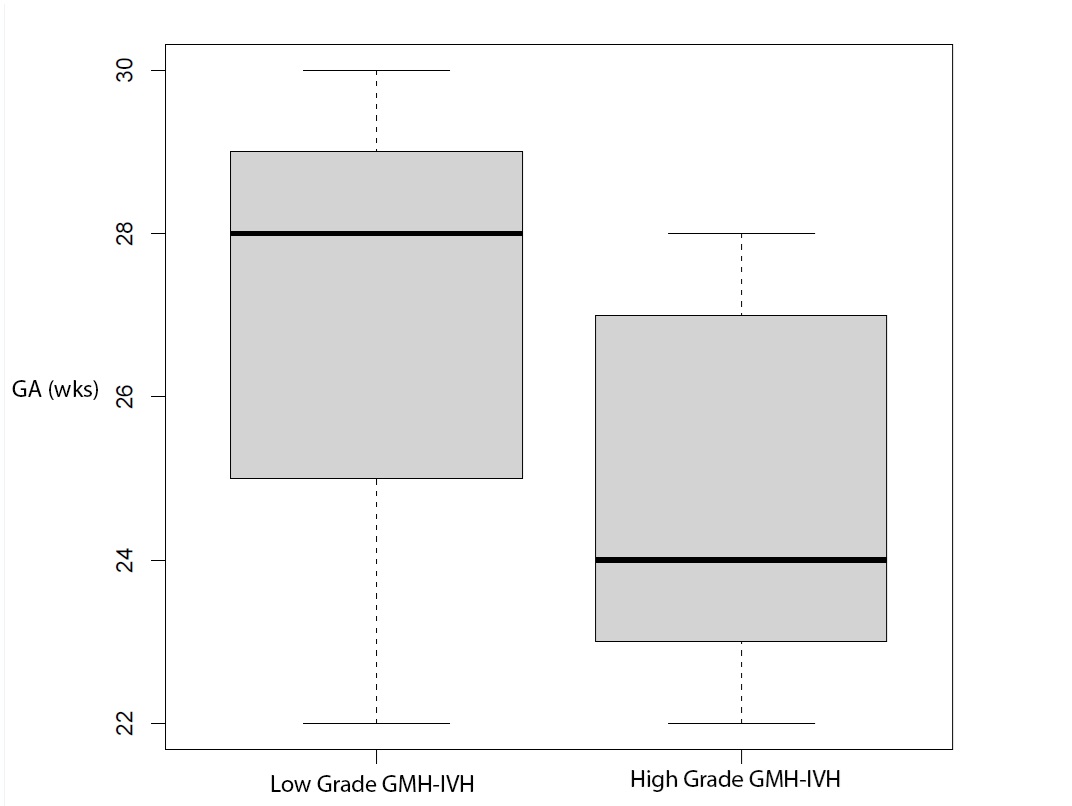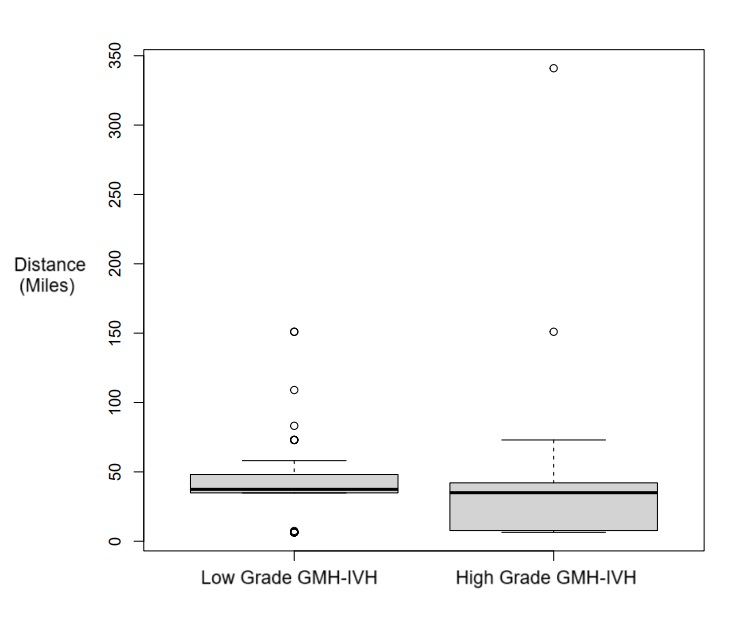Neonatal General 2: Neurology
Session: Neonatal General 2: Neurology
322 - Intraventricular Hemorrhage in Preterm Neonates Transported to a Tertiary Care Facility: Does Distance and Transport Vehicle Effect the Occurrence of Hemorrhage
Friday, April 25, 2025
5:30pm - 7:45pm HST
Publication Number: 322.5419
Karen V.. Maldonado L, University of Florida College of Medicine, NEWBERRY, FL, United States; Nikolay Bliznyuk, University of Florida, Gainesville, FL, United States; Michael D. Weiss, University of Florida College of Medicine, Gainesville, FL, United States

Karen V. Maldonado L, MD (she/her/hers)
Neonatal and Perinatal Medicine Fellow
University of Florida College of Medicine
NEWBERRY, Florida, United States
Presenting Author(s)
Background: Although neonatal care for premature neonates less than 30 weeks has improved greatly over the last several decades, GMH-IVH remains a major morbidity in this patient population. Premature neonates less than 30 weeks are not always born in a facility equipped with a tertiary/quaternary neonatal intensive care unit and therefore must be transported. The transport environment is very chaotic and involves loud noises, vibration, and moving to different beds. Multiple studies have shown that neonates that are outborn and require transport have a higher incidence of GMH-IVH.
Objective: To study factors that increase the risk of GMH-IVH in premature babies who are outborn and transported to our institution for medical care.
Design/Methods: Single center, retrospective, observational cohort study approved with a waiver of informed consent by IRB prior to collection of any data which included data from 74 Outborn neonates 30 weeks or less gestational age who had evidence of IVH by imaging (Ultrasound or MRI) and were transported to UF health via Helicopter, fixed wing aircraft, or Ambulance. Linear regression models were built to investigate the relationship between transport and IVH. We will use regression models to predict IVH and will evaluate for confounding variables and interaction factors.
Results: A total of 74 neonates were included in the study. There was no association between high-grade GMH-IVH and the mode of transport (air vs. ground). Additionally, no significant relationship was found between the distance or duration of transport and the occurrence of high-grade GMH-IVH. However, a significant association was identified between gestational age and the incidence of high-grade GMH-IVH (p < 0.05).
Conclusion(s): In neonates of 30 weeks gestational age or less, the severity of GMH-IVH is not associated with transport distance, duration, or mode (air vs. ground). The observed association with gestational age suggests that implementing GMH-IVH care bundles at smaller facilities may help reduce the incidence of high-grade GMH-IVH.
Neonatal Demographics
.jpg) Table 1. Neonatal Demographics of Outborn Neonates with low-grade versus high-grade GMH-IVH.
Table 1. Neonatal Demographics of Outborn Neonates with low-grade versus high-grade GMH-IVH.Table in progress.
Gestational Age in Outborn Neonates with GMH-IVH
 Figure 1. Gestational age comparison in outborn neonates with low-grade versus high-grade GMH-IVH. Neonates with high-grade GMH-IVH demonstrated a significantly lower gestational age than those with low-grade GMH-IVH (p < 0.05).
Figure 1. Gestational age comparison in outborn neonates with low-grade versus high-grade GMH-IVH. Neonates with high-grade GMH-IVH demonstrated a significantly lower gestational age than those with low-grade GMH-IVH (p < 0.05).Distance of Transport in Outborn Neonates with GMH-IVH
 Figure 2. Distance of transport comparison in outborn neonates with low-grade versus high-grade GMH-IVH.
Figure 2. Distance of transport comparison in outborn neonates with low-grade versus high-grade GMH-IVH. 
